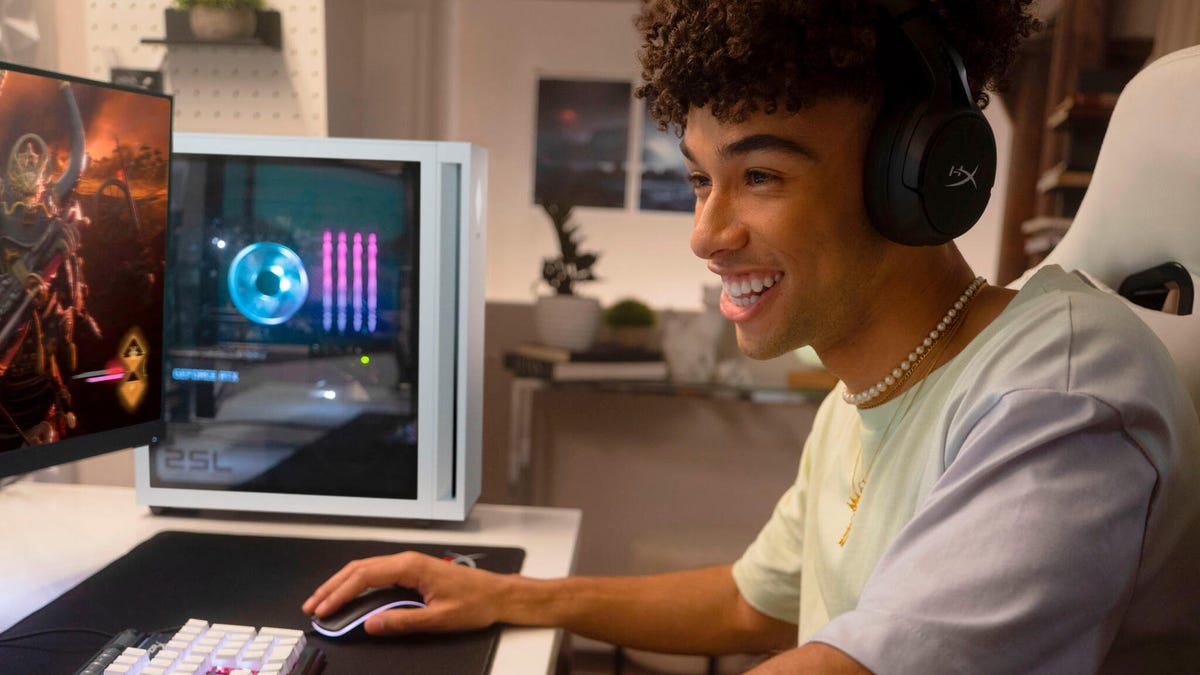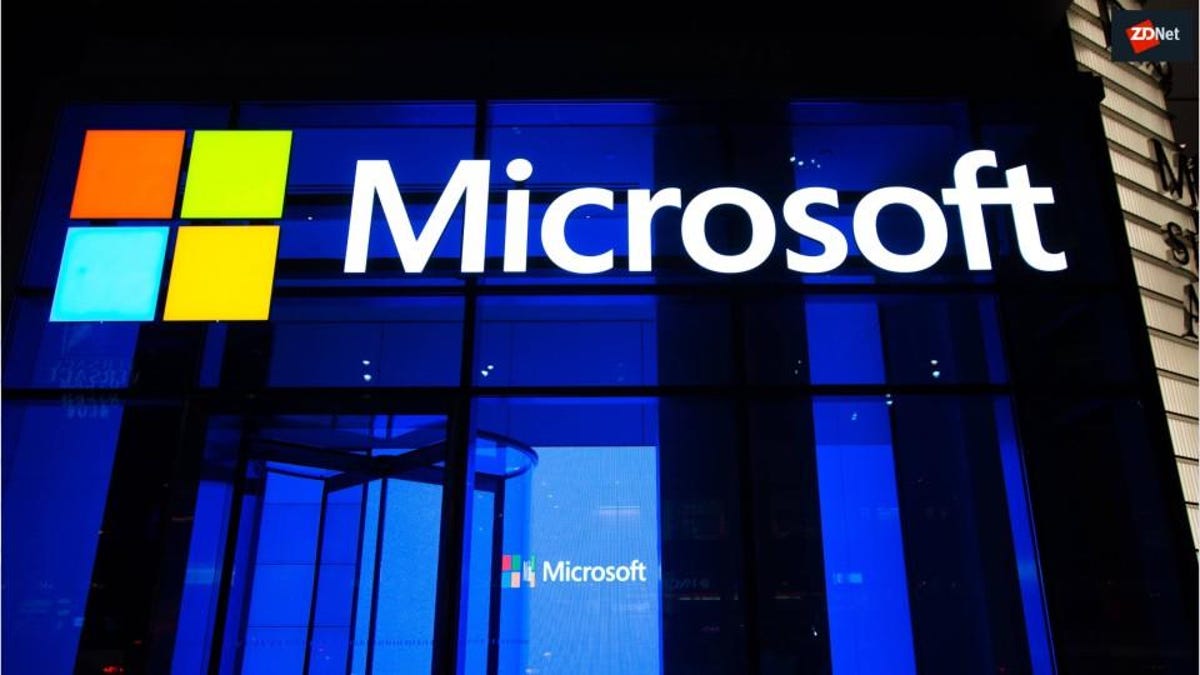Buying a computer for your kid? Here’s our best advice
Computer shopping is not fun. There, I said it. There are so many options, configurations, jargon, and a constant stream of promotions. The shopping dynamic gets even muddier when you’re looking for a computer for a kid who may or may not have a specific task in mind.
My daughter, for example, wants a computer for school work. My two sons are gamers who also aspire to stream on Twitch of a living. Two completely different use cases with two completely different needs.
Below I’ve rounded up a few of the more common requests from kids and why they’d need a computer, such as for gaming, school work or becoming the next big YouTuber. I’ve also included several different options for varying budgets.
Get this computer if …
Your kid wants to play video games
My anecdotal experience, courtesy of my own children, is that one of the most sought-after types of computers has to be a gaming PC. That means a computer that’s powerful enough to play everything from Fall Guys or Minecraft to Fortnite and Call of Duty.
What makes a gaming computer, well, a gaming computer? There’s a lot that goes into it, but the gist of it is you’ll ideally want some form of dedicated graphics card (GPU). A stand-alone GPU is what gives gaming computers better graphics and performance. The downside to adding a dedicated GPU to a computer also increases the price — graphics cards aren’t cheap.
If your child wants a gaming PC, but they don’t play any resource-intensive games (like Call of Duty or Red Dead Redemption 2), you can get by with a computer that has integrated graphics (a graphics processor that’s built into the CPU). Heck, I’ve had some success playing Fortnite on a PC I built that used the integrated graphics processor built into AMD’s very affordable Ryzen 3 3200G processor.
What to look for: Besides the graphics, you’ll also want to make sure a gaming PC has plenty of storage space — 512GB is a good starting point — and at least 8GB of memory, but preferably 16GB. Below are a few recommendations for a gaming PC.
- Processor: Intel Core i5/AMD Ryzen 3 5300G or newer.
- Memory: Minimum of 8GB, but preferably 16GB.
- GPU: Nvidia GTX 1650/AMD Radeon RX 5500 for low-res gaming. Nvidia RTX 30-series/AMD Radeon RX 6800 for high-res gaming.
- Storage: 512GB SSD at a minimum. 1TB SSD or more is preferred.
Our kid gaming picks
Budget option
The HP Pavilion Gaming Desktop starts at $599 for a system that comes with an AMD Ryzen 3 5300G processor and an AMD Radeon RX 5500 GPU. Both of which are more than enough for 1080p gameplay across major titles. HP took a couple of shortcuts to get the price down below $600, namely that the Pavilion comes with 8GB of memory and 256GB of storage. However, you can customize the build at checkout and double both components to 16GB of memory and 512GB of storage for a total of $739. Not bad. Not bad at all.
Mid-range option
Aegis RS 11TC-405US Gaming Desktop: MSI’s Aegis line of desktop gaming PCs looks great and offers plenty of performance for the price. This particular option gets you a well-rounded build that includes Intel’s 11th Gen. i5 11400F processor, an Nvidia GeForce RTX 3060, 16GB of storage and 1TB of SSD storage. Better yet? It comes with all of the RGB lighting that makes a gaming computer look so cool.
High-end option
Streaming Pro BLD Kit: The best part about a gaming PC is that you aren’t stuck with whatever’s inside it the day you bought it. At any time, assuming compatibility isn’t an issue, you can upgrade the CPU, GPU, memory or add more storage. To learn what parts go where it’s a good idea to build your first gaming PC. But instead of sourcing the parts on your own, getting something like the NZXT Streaming Pro BLD Kit is a convenient and fun way to go.
You get a slight discount compared to a pre-built gaming PC, a tool kit and step-by-step instructions that walk you through the build. The Streaming Pro build is the most expensive and the most capable out of the three gaming PCs highlighted here. It comes with an AMD Ryzen 7 5800X processor, Nvidia GeForce RTX 3080Ti GPU, 32GB of memory and 1TB of storage. (There are more affordable BLD Kits if this is the way you want to go but you don’t want a high-end system. Check those out here.)
Your kid only needs to do school work
For basic everyday computing tasks, such as school work, you have a wider range of options and operating systems. A Chromebook, for instance, is more than capable of giving a student the means to get classwork done, be it on a dedicated school website or typing out a report in Google Docs. Windows PCs and Macs, of course, also offer a wide range of configurations and models (that’s more so true about Windows than Mac).
What to look for: For a Mac or Windows system, try to find something within your specific budget with at least 8GB of memory and 256GB of storage. You can get by with 128GB and the combination of a cloud storage service like iCloud Drive, Google Drive or One Drive. For a Chromebook, you can still have a good experience with 4GB of memory. The amount of storage doesn’t matter as much as the speed of the storage on a Chromebook because of Google Drive integration. You should try and avoid anything with eMMC storage as it’s slower than an SSD and you’ll see an impact on performance.
- Processor: Intel Core i3/AMD Ryzen 3 or newer
- Memory: 8GB or above
- GPU: N/A
- Storage: 256GB or above
Our kid schoolwork picks
Budget option
Lenovo Chromebook Duet: A Chromebook is a reliable and easy way to start a kid’s computer journey. They’re relatively affordable, receive routine software updates and have a strong track record when it comes to security. And they’re commonly used in an education setting, so the apps or websites kids use for lessons work on a Chromebook. Plus you’ll get access to Google’s suite of Docs, Sheets and Slides. The Lenovo Chromebook Duet has long been one of my favorite Chromebooks because it’s a 2-in-1 that comes with a detachable keyboard for under $300. And since everything on a Chromebook is stored in your Google Drive account, you don’t need something with a ton of storage.
Mid-range option
Surface Pro 8 with Keyboard Bundle: Microsoft is currently running a back-to-school promotion for the Surface Pro 8 that gets you the base model Pro 8 with an Intel Core i5 processor, 8GB of memory a 128GB SSD. That’s over $300 off the typical price for that combination. Any of Microsoft’s Surface options are a worthy option, and a Surface Pro 8 at this price is no exception.
High-end option
MacBook Air: Apple recently announced and released a completely redesigned MacBook Air. It’s the first major redesign in many years, combining an impressively thin housing with a larger 13.6-inch display, and Apple’s newest M2 processor. The M2 in the base model MacBook Air has an 8-core CPU and an 8-core GPU with 8GB of memory and 256GB of storage. The MacBook Air with an M2 processor’s performance is overkill for basic schoolwork, but it’s something your child can grow into in the years to come. It’s even a good pick for someone who does light photo and video editing.
Your kid wants to be a YouTuber
I have yet to meet a kid over the age of 5 who doesn’t want to be some kind of a YouTube personality. Be it someone who unboxes toys and plays with them, does trick shots or plays video games — YouTube is life for most kids. In order to be a YouTuber, though, you need to have a computer that’s powerful enough to edit hours and hours of video.
What to look for: There’s a lot of overlap between a gaming PC and a computer that’s built to efficiently edit video. In fact, if you’re using a Windows PC you’ll want something with a dedicated GPU to speed up the editing process. But, unlike a gaming PC, editing videos affords you the flexibility to pick Windows or Mac. Apple’s Mac lineup is commonly used to edit video, with the latest Apple Silicon processors having enough processing and graphical power to get the job done.
- Processor: Intel Core i5/AMD Ryzen 3 5300G or newer.
- Memory: Minimum of 8GB, but preferably 16GB or even 32GB for video editing.
- GPU: Nvidia GTX 1650/AMD Radeon RX 5500 or newer.
- Storage: 512GB SSD at a minimum. 1TB SSD or more is preferred.
Our kid YouTuber picks
Budget option
The Acer Nitro 5 makes for a respectable entry-level gaming laptop, which means it’ll handle video and photo editing with the same gusto. This sub-$800 build gets you a 15.6-inch display, an Intel Core i5 processor, a Nvidia GTX 1650, 8GB of memory and 256GB of storage. It’s a basic build that’s good enough to get someone started with video editing, while also maybe playing a game or three in their spare time.
Mid-range option
The 13-inch MacBook Pro was recently updated with Apple’s M2 Apple Silicon processor. That new processor adds faster performance to the 13-inch MacBook Pro, while the outside of the laptop has remained unchanged. The stock configuration of the 13-inch MacBook Pro comes with an 8-core CPU, 10-core GPU, 8GB of memory and 256GB of storage. I’d suggest upgrading the memory on this build to 16GB, and possibly doubling the storage to 512GB so there’s enough room to store and edit footage. However, you could always use an external SSD to make up for the storage space.
High-end option
Apple’s 14-inch MacBook Pro was the first Mac to feature the company’s refreshed design, with a larger display, complete with a notch at the top. The MacBook Pro also has an SD card reader, three Thunderbolt 4 ports and a MagSafe 3 port for charging. In addition to a new design, the 14-inch MacBook Pro comes with Apple’s M1 Pro Apple Silicon processor that lives up to its name for performance. For those who care about specs, the base model gets you an 8-core CPU, 14-core GPU, 16GB of memory and a 512GB SSD.
Keep in mind, there’s a lot of overlap between options
Just because a computer is listed as an option for gaming or for editing video for your budding YouTube star doesn’t mean they can’t also perform other tasks.
For example, all gaming PCs would are fully capable of editing video. For parents with a child who is learning 3D or CAD designing for video games or 3D printing, then you really have several options — both Windows or Mac. Any of the MacBooks will get the job done, as will the gaming computers.
Macs are getting more powerful, and developers are starting to take notice, but they’re still not true gaming options. That’s really the only scenario where you’re limited to a specific operating system.





Pingback: where to buy psilocybin denver
Pingback: https://www.kentreporter.com/reviews/phenq-reviews-urgent-side-effects-warning-honest-customer-truth/
Pingback: dispensary cannabis delivery